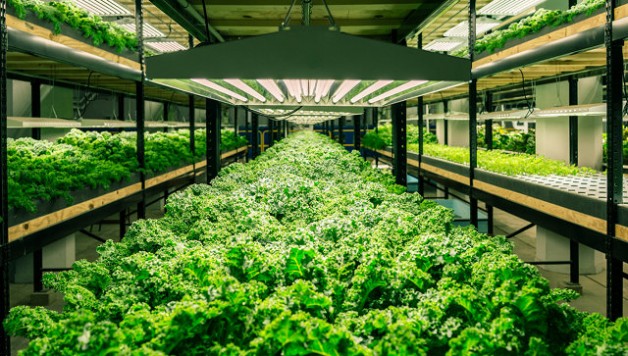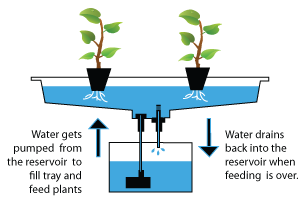With increased awareness surrounding the agricultural industry and many of the questionable practices that involve chemicals, fertilizers, and soil degradation, many people are looking to alternative food options. A growing number of individuals and families are trying to change their diets to reflect a greater level of organic consumption. For many, it’s a greater concern than just what’s being put into our bodies. It’s the entire process that is upsetting to a growing segment of society. From planting, to harvest, and all the way to how the food is processed, transported to grocery stores, and stored upon arrival. The entire food production supply chain is to some, an ethical concern regarding both human health and the sustainability of our environment.
Alternative solutions are available for us to make small shifts in our thinking and lifestyles in order to play a small, yet important part in reducing the impact of traditional food production. This is where hydroponics, both large and small scale provide long-term, viable solutions.
Closed-Loop Indoor Food Production
Unlike traditional agriculture, hydroponics is a technology that provides a closed-loop indoor food production solution which is positive for our human health as well as the health of our environment. In traditional agriculture, we’ve traditionally experienced a huge amount of resource and water waste, the negative impacts of soil degradation, as well the harmful side effects of eutrophication – the damaging process of nutrient and fertilizer runoff into our coastal ecosystems.
With hydroponics, food is grown indoors in a closed-loop and controlled environment. In an indoor environment, hydroponics enables the growers to manipulate and monitor every aspect of the plants’ growth, leading to optimal food production results. Because of the controlled nature of hydroponics, there are many aspects that increase efficiencies through closed-loop processes.
Here are some of the elements of hydroponic technology which make it a closed-loop indoor food production system:
Water Reuse
In hydroponics, water is held in a reservoir and recirculated through pumps to continuously deliver a steady stream of nutrient solution to the plant’s roots. This means that a water is not lost into the ground like it would be in traditional agriculture.
Light Proofing
In indoor growing, artificial lights must be used to recreate natural growing conditions. Using horticultural lights efficiently with the boost from ballasts and reflectors can not only provide the necessary growth requirement but can also provide heat benefits. A controlled environment mitigates heat and energy loss, and adds a dual purpose to the required grow lights.
Indoor Air Control
In an air-sealed growing room, air conditioners, dehumidifiers, and Co2 generators work together to recirculate the indoor air and adjust it to the right level for perfect plant growth. Proper control and monitoring means that the right air quality is always achievable with limited energy waste.
For those concerned about the impact that traditional food production has on our human health and our environment, it’s clear that hydroponics offers a multitude of practical and sustainable solutions for closed-loop indoor food production.Urban Organics in St. Paul, uses aquaponics technology to create a closed-loop indoor food production factory. Image via Urban Organics.

